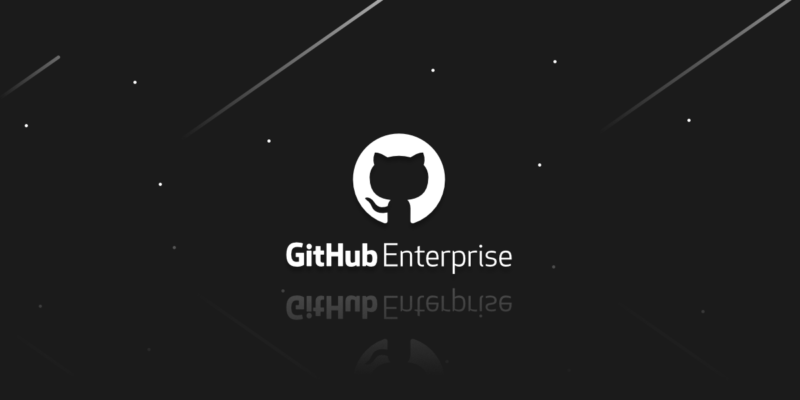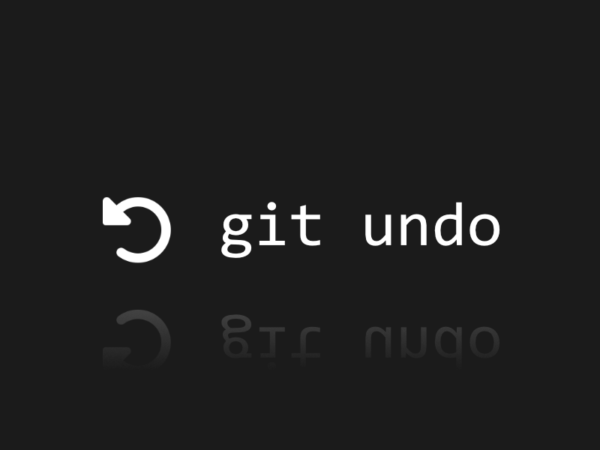
GitHub Enterprise Server Overview
GitHub released its Enterprise solution in 2011, and up to now, a lot of organizations have chosen this solution for their software development. Currently, it is a highly developed platform equipped with a whole range of features.
In today’s post, we will introduce you to GitHub Enterprise server and get to know it better. It is not without significance that this is an on-premise solution from the most significant git hosting service that provides users not only with a version/revision control system based on Git but also tools such as a dashboard with issues, etc. It sounds like an excellent platform, right? However, we must not forget about the backup of our critical repositories – a safe and intuitive backup, such as GitProtect.io.
GitHub Enterprise Server provides the Management Console that lets organizations configure instance settings and perform administrative tasks, ensuring full control over their environments. Enterprises should evaluate which GitHub plan meets their needs, as features and support levels differ. GitHub Enterprise Support offers dedicated resources to resolve technical issues and assist with troubleshooting.
Organizations must consider GitHub Enterprise costs, as pricing and licensing can heavily influence their decisions.
GitHub Enterprise – the beginning
GitHub Firewall Install
The project was originally developed under the name GitHub Firewall Install. From the very beginning, the name indicated the implementations we would use this product for. Originally, it was supposed to be the installation of the GitHub server in our private and isolated network, i.e., the network behind the company’s firewall. In these cases, organizations set up a virtual machine to host their GitHub Enterprise Server, allocating resources and enforcing security.
Currently, this portal has evolved and has become safer and more extensive. At the outset, it should be mentioned that this platform is built in the same way as GitHub, which boasts the most significant repository base of 420 million, with as many as 150 million active developers. Users configure licenses, domains, two-factor authentication, and TLS through the Management Console to create a secure, customized setup.
These numbers speak for themselves, but what is really behind them? Obviously, GitHub enjoys excellent trust. The trust comes from reliability and business continuity. Such features can also boast of GitHub Enterprise, a platform that does not differ in construction from the working servers that support the GitHub portal. Thanks to this, we get an extensive version control system over which we have complete control. GitHub Enterprise Server offers teams the ability to create staging instances to test changes before deploying to production, enabling safer updates and smoother deployments.
GitHub on-premise
GitHub Enterprise is, in a sense, an offer on-prem by GitHub, and it must be admitted that during the 14 years of this project, the creators behind it have managed to achieve a lot. The proximity of this project to the servers supported by the GitHub.com portal, mentioned in this post, should be remembered and appreciated because, as a result, we are now offered the Enterprise Server and GitHub Enterprise Cloud versions.
The Enterprise Cloud version is our enterprise server, but it is operated by GitHub. This means the servers are physically located in the GitHub data centers, and of course, there are pros and cons of this approach. A sure advantage is the fact that we don’t have to take ownership of either the physical infrastructure itself or its operation. The only thing that interests us, in this case, is the support, in a sense, of the front-end of the enterprise platform.
With GitHub Enterprise Cloud, your repositories and resources are hosted by GitHub, giving you automatic access to the latest features and bug fixes once they’re published by GitHub. You can choose to host your enterprise on GitHub.com or use a dedicated subdomain on GHE.com for greater control over your company’s code and data location. Enterprise members can access resources using personal GitHub accounts or, if you implement Enterprise Managed Users, through provisioned accounts managed via an external identity provider.
On the other hand, one could write that the real version of GitHub on-premise is the Enterprise Server edition, but this is also not entirely true. 14 years ago, when this project was known under the original name of GitHub Firewall Install, one could risk saying that it was a wholly local solution. Still, now we have installations intended for both local servers and cloud providers, and we can use the installation option on the GitHub infrastructure.
The truth is also that whether we choose the GitHub Enterprise Cloud version or decide to use GitHub Enterprise Server, the most critical issue for us should be security. Such security can be ensured by GitProtect.io backup in every event of failure. If you decide to install locally on our own infrastructure, but also in any other case, we will be able to perform a safe backup of our projects.
GitHub Enterprise – what you need to know
GitHub Enterprise offers you great flexibility as it can be installed both on local servers behind a firewall and also, for example, in Azure. Possibilities do not end there. This product is a DevOps platform that will allow you to manage all projects in our company from one place. Additionally, you can use all native GitHub tools, including the Dashboard and Issues, to manage your projects effectively.
GitHub Enterprise offers options to extend the platform with additional features or add-ons, including enhanced security, storage, compliance tools, and premium support, depending on your organizational needs.
User privileges
You can assign administrative access to specific employees for managing your GitHub Enterprise Server instance. GitHub notes that individuals with Linux administration experience tend to perform better in deployment and maintenance tasks. Administrators have several capabilities, including configuring and monitoring the GitHub Enterprise server instance through a web browser, administrative SSH access, and REST or GraphQL APIs. They can also set up external authentication using CAS, LDAP, or SAML, and define usage policies to enforce business rules or meet regulatory compliance requirements.
Additional optional features
On GitHub Enterprise Server, you can configure optional features to enhance your enterprise’s software development lifecycle. These include GitHub Actions for automating CI/CD and development workflows, GitHub Advanced Security for scanning code to detect secrets and vulnerabilities, GitHub Connect to integrate with GitHub.com and leverage shared data and features, and GitHub Packages for securely hosting and managing software packages within your organization.
GitHub Enterprise and security
In the last two years, a lot has also changed regarding security. Currently, the GitHub Enterprise platform is delivered with automated tools that will check and display potential errors and threats during pull requests. Of course, we can customize queries, create new policies to check the code, filter potential threats, etc.
Security features in GitHub enable your business to proactively protect its codebase. With GitHub Advanced Security, you can receive alerts about leaked secrets and vulnerable code patterns. Dependabot helps keep your software dependencies up to date, while the security overview provides visibility into the overall security posture across all your repositories.
GitHub Enterprise includes even more built-in security features and delivers them on-premise. Of course, SSO and connection to Active Directory are available to us, but undoubtedly, the excellent news is the built-in ability to configure logins using passkeys without needing a password, verifying a new device, and two-factor authentication.
Detailed audit logs and administrative SSH access let organizations monitor activity, enforce policies, and respond quickly to disruptions, protecting all repositories.
Only verified commits can be pushed
Pushing commits to a remote repository on GitHub Enterprise server works similarly to GitHub.com. However, GitHub Enterprise typically uses enterprise authentication, so users may log in with company credentials. Repositories are also hosted on custom domains (e.g., git.company.com), requiring properly configured remote URLs.
Admins can enforce stricter policies in GitHub Enterprise server instances, such as requiring signed commits or blocking force pushes. Depending on your instance’s version, the interface might differ slightly (features like the “More actions” button may not appear exactly as they do on GitHub.com). Nonetheless, GitHub Enterprise server environments support standard Git workflows with added enterprise-level controls and project-specific customization.
Backup utilities within the GitHub Enterprise server instance
GitHub Enterprise Server offers several options to protect against data loss and service disruptions. You can use GitHub’s Backup Utilities to take regular snapshots of your instance, ensuring configuration and user data are safely backed up. For increased reliability, a passive replica instance can be configured to automatically take over in case of system or network failure. Additionally, active replicas can be set up to improve performance and scalability, especially for geographically dispersed teams or environments with high demand. The platform monitors user activity and produces audit logs to boost transparency and security.
Snapshots of your GitHub Enterprise server instance are a very basic means of data protection. You need a professional backup for your organization’s applications, their code, and updates.
For example, GitProtect can significantly enhance the data protection and business continuity strategies for GitHub Enterprise server environments:
- Automated scheduled Backups: GitProtect allows scheduling and automating backup processes for repositories and metadata with full data coverage for GitHub, Azure DevOps, GitLab, Bitbucket, and Jira. Thus, you can ensure reliable recovery in any case of disaster.
- Monitoring & Reporting: GitProtect provides visual data dashboards, detailed audit logs, SLA reporting, Slack, and email notifications on backup process validation, which gives IT teams visibility into the protection status across your GitHub Enterprise.
- DR & Granular Restore: You can achieve fast recovery of full repositories, metadata, and project data or their individual components, minimizing downtime during failures or attacks.
- Multi-storage compatibility: Bring your storage or use GitProtect’s unlimited one. If you choose GitProtect storage, your backups are stored securely in immutable formats across it. Such backups protect against accidental deletion, tampering, and insider threats while being encrypted and compliant with SOC 2 and ISO 27001 security standards. Moreover, GitProtect allows you to follow the 3-2-1 backup rule and keep as many copies as you need in different storage destinations (cloud/on-prem/hybrid) by replicating your backups to meet strict compliance and security requirements.
- Unlimited retention: GitProtect allows long-term or unlimited retention, which strengthens Disaster Recovery and restore capabilities.
GitHub Enterprise for DevOps
The GitHub Enterprise platform is heavily focused on the DevOps approach. We see it practically every step of the way. Managing all our projects from one place is available. Automation and the possibility of scaling for all projects are also available.
By adding a pipeline that allows us to use CI/CD, we get a compelling set of project management tools, and this is not the end, because we can use 24/7 GitHub Enterprise support, as well as ready-made best practice examples.
Undoubtedly, automation is at a very high level. The possibility of creating policies and inquiries for all projects or one chosen one dramatically improves and speeds up the work. GitHub Enterprise Server streamlines collaboration with tools for code review and efficient pull request management, supporting high-quality code, and faster delivery.
While statistics in multiple sources say that teams can save around 50% of time with AI, DevOps can save from 45 to 60 minutes a day performing regular tasks, thanks to the CI/CD pipelines.
The impact of automation & AI on GitHub Enterprise
GitHub Enterprise accelerates and secures software development with automation and AI tools. GitHub Actions automates CI/CD pipelines, testing, deployment, and routine workflows, ensuring efficient and reliable development. Meanwhile, GitHub Copilot leverages AI to suggest code, assist with complex logic, and help resolve bugs, boosting developer productivity. Developers using GitHub Copilot are said to increase their productivity by up to 88%, and over 1.8 million paid users have adopted it into their daily workflows. Advanced security tools, ignited by automation, scan repositories for vulnerabilities and secrets during pull requests, protecting code before it’s merged.
When using GitHub Enterprise and its AI additional features, you have to keep in mind that AI has opened up new cybersecurity risk vectors, assisting in full-scale supply chain attacks and LLM’s platform exploits through mean-intended prompt engineering. AI agents integrated with business tools can be exploited to leak sensitive data, including GitHub repository secrets. These exploits call for even stricter input validation, dependency checks, and proactive scanning to protect GitHub repositories and other GitHub Enterprise AI integrations (read more: The Hacker News).
How else can malicious actors exploit GitHub? Find more insights in the CISO’s Guide to DevOps Threats.

Summarizing: GitHub Enterprise & full control over it
GitHub Enterprise is a comprehensive package that has grown over the years into a true DevOps platform. It brings significant advantages, such as the automation of our pipelines through CI/CD, scaling across all repos, etc. The fact that is also a part of GitHub infrastructure is also a considerable advantage. We have the option to select between installations on our own server, and we can also carry out installations based on AWS, Azure, or Google Cloud. All this means that we have our own portal with great possibilities at our disposal. However, no matter what form of installation we do not choose initially, we should always focus on backup. The professional GitHub backup is the only way to provide real-time protection of your code, repositories, and projects – and using this link, you can test free GitProtect for GitHub for 14 days.
The article was originally published on January 20th, 2022







